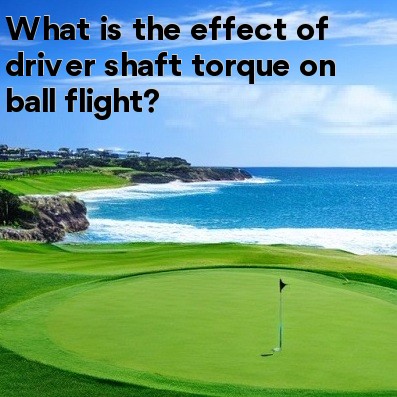
In golf, What is the effect of driver shaft torque on ball flight?
When it comes to golf, the equipment you use can greatly affect your performance on the course. One important aspect of golf club design that can significantly impact your ball flight is the driver shaft torque. The torque of a driver shaft refers to its ability to resist twisting during the golf swing. Understanding how torque affects ball flight can help you make more informed decisions about your club selection and improve your game on the course.
Driver shaft torque plays a crucial role in determining how the clubface closes or opens at impact. The torque rating of a shaft indicates how much it twists under a certain amount of force. A higher torque rating means the shaft is more prone to twisting and will allow for more bending and twisting of the clubhead during the swing. On the other hand, a lower torque rating indicates less twisting and more stability in the clubhead.
- A higher torque shaft can benefit golfers who struggle with slicing the ball. The extra torque allows the clubface to close more easily, reducing the side spin created at impact and helping to straighten out the shot. This can be particularly helpful for players with slower swing speeds or those who have difficulty squaring the clubface consistently.
- Conversely, a lower torque shaft is typically preferred by players who tend to hook the ball. The reduced twisting in the shaft helps prevent the clubface from closing too quickly, resulting in a straighter ball flight. Golfers with faster swing speeds or those who have a tendency to hook the ball excessively can benefit from the added stability provided by a lower torque shaft.
It is important to note that while torque can have a significant impact on ball flight, it is just one of many factors to consider when selecting a driver shaft. Factors such as flex, weight, and length also play important roles in optimizing performance.
In addition to the effect on shot shape, the torque of a driver shaft can also impact the feel of the club during the swing. A higher torque shaft may feel more flexible and give a player a sense of increased power or whip through the ball. Conversely, a lower torque shaft may feel stiffer and provide a more stable, controlled feel. The choice between a higher or lower torque shaft ultimately comes down to personal preference and the unique needs of each golfer.
Overall, the effect of driver shaft torque on ball flight is significant. A higher torque shaft can help straighten out a slice, while a lower torque shaft can reduce excessive hooking. The torque rating of a shaft not only influences shot shape but also affects the feel of the club during the swing. By understanding the impact of shaft torque, golfers can make more informed choices when selecting a driver and optimize their performance on the course.





